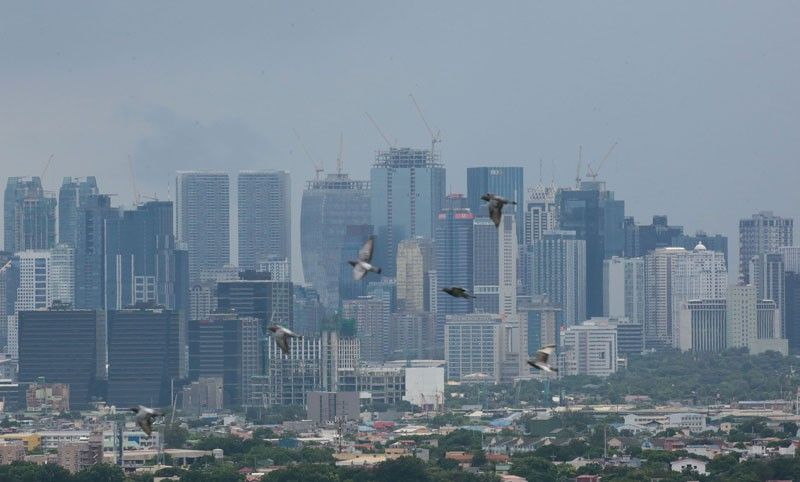Trade deficit widens more than expected

MANILA, Philippines — The Philippines’ balance of trade in goods recorded a wider deficit in May as the growth in imports was faster than the uptick in exports during the review period, the Philippine Statistics Authority (PSA) said yesterday.
Data from the PSA showed the country’s trade shortfall reached $2.76 billion in May, a huge 110 percent jump from $1.31 billion in the same period last year, but lower than the $3.08 billion gap recorded a month ago.
The wider trade shortfall was due mainly due to the faster growth in imports of 40 percent to $14.54 billion in May from just $10.4 billion a year ago as the economy reopens and the country benefits from global recovery in business activities. The latest growth, however, was slower than the 115 percent surge recorded in April.
The country’s export performance also benefitted from the reopening of the global economy, registering a growth, albeit slower, of nearly 30 percent to $5.89 billion from a year ago.
The balance of trade, also known as the trade balance, refers to the difference between the monetary value of a country’s imports and exports over a given time period. A deficit indicates that the value of a country’s imports exceeds exports, while a surplus indicates more export than imports.
From January to May, the country’s trade shortfall widened by 43 percent to $14.2 billion from $9.9 billion in the same period last year as imports continued to outpace exports.
Imports for the five-month period rose by nearly 28 percent to $43.5 billion while exports jumped by 21.4 percent to $29.4 billion.
For May alone, dollar earnings from electronic products, the country’s top export, registered an increase of 25 percent to $3.43 billion.
Exports volume is still among the highest before the pandemic and still near the record high posted in March, which will help sustain the relatively narrower trade deficit.
Rizal Commercial Banking Corp. chief economist Michael Ricafort said the easing of quarantine restrictions also allowed exports to go up.
“Faster economic recovery in some developed countries that are major export markets of the country especially where COVID-19 vaccine rollouts are much faster toward herd immunity could support faster recovery in exports as seen in recent months,” Ricafort said.
Other exports showed strength in May, particularly ignition wiring sets, metal components, cathodes and electronic equipment, which all posted triple digit increases.
The country’s top 10 exports, which cornered 85 percent of the total, jumped 34 percent to nearly $5 billion during the month.
The top 10 export destinations of the Philippines also increased by 26.7 percent to $4.93 billion.
Huge growth was seen in exports to the US, Thailand and Germany. China was the country’s top export destination with purchases valued at $954 million. China cornered 16 percent of the country’s total shipments.
Even with the increase, ING Bank senior economist Nicholas Mapa said exports may have been hampered by the lack of shipment options as local exporting firms have complained about the difficulty of fulfilling orders due to bottlenecks in the shipping industry.
Meanwhile, imports of goods and services continued to expand, still due to low base, with the sub-sectors of mineral fuels and lubricants, consumer electronics, and iron and steel all posting triple-digit gains.
Fuel imports registered a huge 302 percent increase amid more expensive oil prices in the world market.
China is still the Philippines’ biggest supplier of imported goods at $2.21 billion, about 26 percent of the total.
Mapa said the trade deficit widened past expectations for a $2.6 billion shortfall after it settled at $2.76 billion.
This is much higher than the $2.1 billion average during the height of lockdowns last year, but still significantly lower than the $3.5 billion average deficit prior to the pandemic.
“A strong dollar theme coupled with the wider-than-expected trade gap may have helped push the peso past the 50 psychological handle with the currency now down 1.94 percent for the relatively young month of July,” Mapa said.
He also said the Bangko Sentral ng Pilipinas (BSP) appears unfazed by the recent swoon in the local currency, indicating that it continues to be driven by supply and demand conditions.
This suggests that the BSP may withhold resorting to costly policy rate hikes to help stem the depreciation trend.
But, Mapa said the BSP may change its tune should the current weakness go on for a considerable period of time.
In the near term, we expect the BSP to stick to its accommodative stance given that the economic recovery is still in its nascent stages as import levels, although rising, are still below pre-COVID-19 levels,” Mapa said, adding that, “we expect continued pressure on the Philippine peso in the near term as import demand accelerates especially if exports remain hampered by shipping bottlenecks. ”
- Latest
- Trending


























